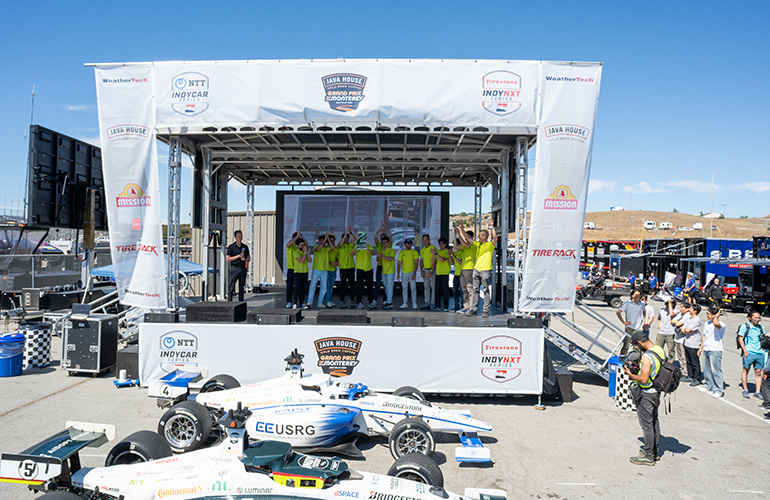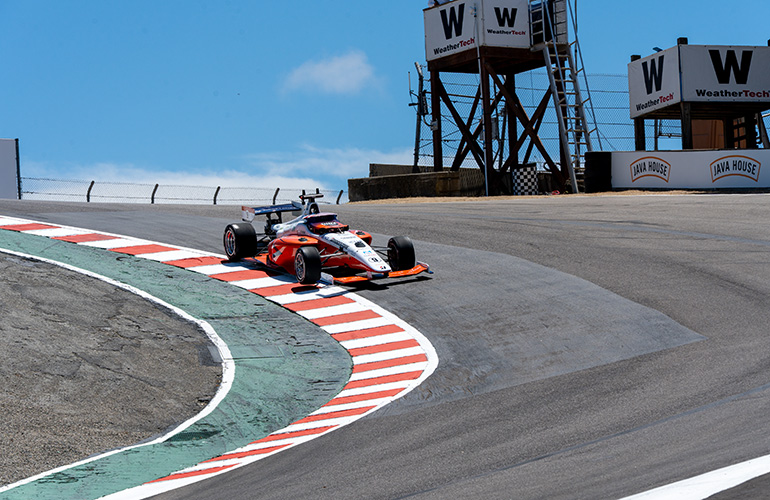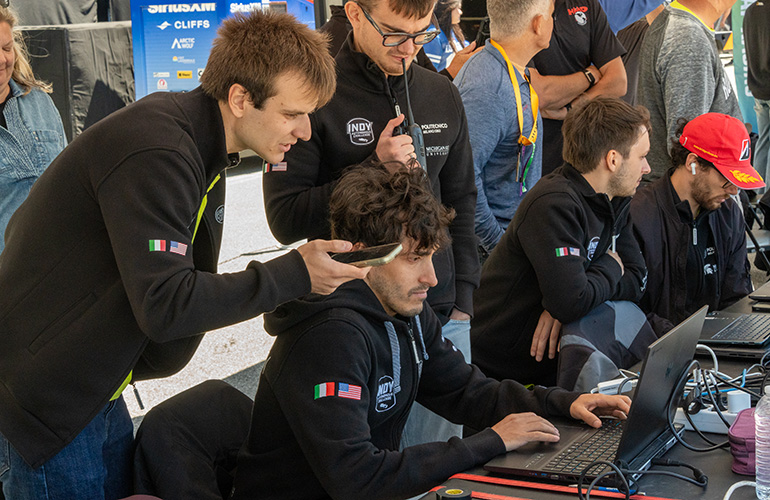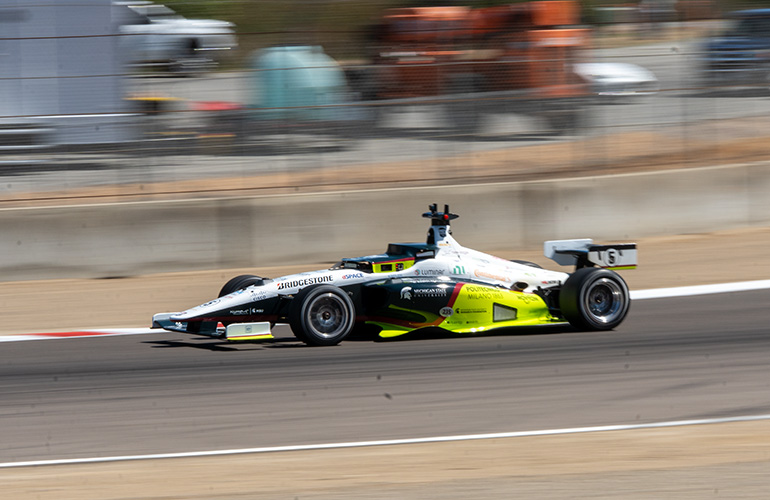The Dallara AV-24 from Team PoliMOVE on the track at Laguna Seca Speedway. | Credit: The Robot Report
History was made yesterday at the iconic WeatherTech Raceway Laguna Seca as the Indy Autonomous Challenge (IAC) pushed the boundaries of artificial intelligence in motorsport. In a display of precision and speed, PoliMOVE MSU emerged victorious, showcasing the advancements in self-driving racecar technology on one of the world’s most challenging road courses.
Purdue AI Racing took second place with the second fastest lap time, and KAIST (Korea Advanced Institute of Science and Technology) took third.

Team PoliMOVE took first place at the event. | Credit: The Robot Report
The highly anticipated event, a precursor to the NTT INDYCAR SERIES Grand Prix of Monterey this weekend, saw university teams from across the globe unleash their AI-driven Dallara AV-24 racecars on the legendary track, complete with its infamous “Corkscrew” turn.

Cavalier Autonomous Racing’s autonomous racecar traverses the corkscrew at Laguna Seca. | Credit: The Robot Report
“Running an autonomous race as part of the Grand Prix of Monterey, on the same track and the same weekend as an NTT INDYCAR SERIES event, is a powerful testament to how far the IAC and our university teams have advanced the field of AI and autonomy,” said Paul Mitchell, CEO of Indy Autonomous Challenge and its parent company Aidoptation BV. “Bringing this race and AI summit to the doorstep of Silicon Valley creates a high-impact moment to showcase the world’s fastest racecars to industry leaders in AI and robotics.”
The AI drivers demonstrated control and strategic decision-making, navigating the technical turns and elevation changes of Laguna Seca with fluidity. All of the teams were able to achieve track speeds above 100 kph (62.1 mph) and complete full laps of the track.

Technical team members from Team PoliMOVE monitor the AI racing parameters and data from the vehicle during the time trial. | Credit: The Robot Report
Laguna Seca puts university teams to the test
“Laguna Seca has a long history of supporting technology and innovation, and we are thrilled to welcome the world’s fastest autonomous racecars to the Grand Prix of Monterey,” said Mel Harder, president and general manager, WeatherTech Raceway Laguna Seca. “We are excited to host IAC and its global network of university and industry partners to explore piloting their SMART Track technologies and how they can enhance safety and fan engagement.”
This marked the third time the IAC has taken to a road course, building on the success of two previous outings at the Monza F1 Circuit, including a recent weekend in June at the Milano Monza Open-Air Motor Show. The IAC event started on oval tracks, and the teams have steadily progressed in capabilities.
The vehicles are autonomous robots, and the AI drivers make all of the steering, acceleration, and braking decisions on their own. The students simply control the parameters that the AI drivers use to make decisions.
Prof. Sergio Savaresi, team lead for PoliMOVE, told The Robot Report, “We have a lot of new team members this year with lots of turnover over the last four years. Driving autonomously on a road course is the ultimate challenge for the students, and the team spent a lot of time in simulation to perfect the AI driver’s decision-making capabilities. I am incredibly proud of this team.”
The challenges of Laguna Seca, with its blind crests and dramatic downhill corkscrew, provided a rigorous test for the autonomous systems. Several teams got stuck at the corkscrew as the AI drivers spun out and had to be rescued by the flatbed tow truck.

Cavalier Autonomous Racing’s autonomous racecar traverses the corkscrew at Laguna Seca. | Credit: The Robot Report
The IAC continues to serve as an incubator for autonomous technology, with innovations on the racetrack having direct implications for the future of commercial self-driving vehicles. Yesterday’s milestone event at Laguna Seca proved that the machines are not just fast, but increasingly intelligent and reliable even in the most demanding racing environments.
